KATHERINE E. YOUNG is the author of two full-length collections of poetry and two chapbooks. She is also the editor of Written in Arlington and curator of Spoken in Arlington. Her writing appears in numerous anthologies, including the Orison Anthology, Red Sky: Poetry on the Global Epidemic of Violence Against Women, Don’t Leave Hungry: Fifty Years of Southern Poetry Review, Spreading the Word: Editors on Poetry, Poets Are Present, Deep Beauty: Experiencing Wonder When the World Is on Fire, and Written in Arlington. Young is also an award-winning literary translator from the Russian.
Woman Drinking Absinthe
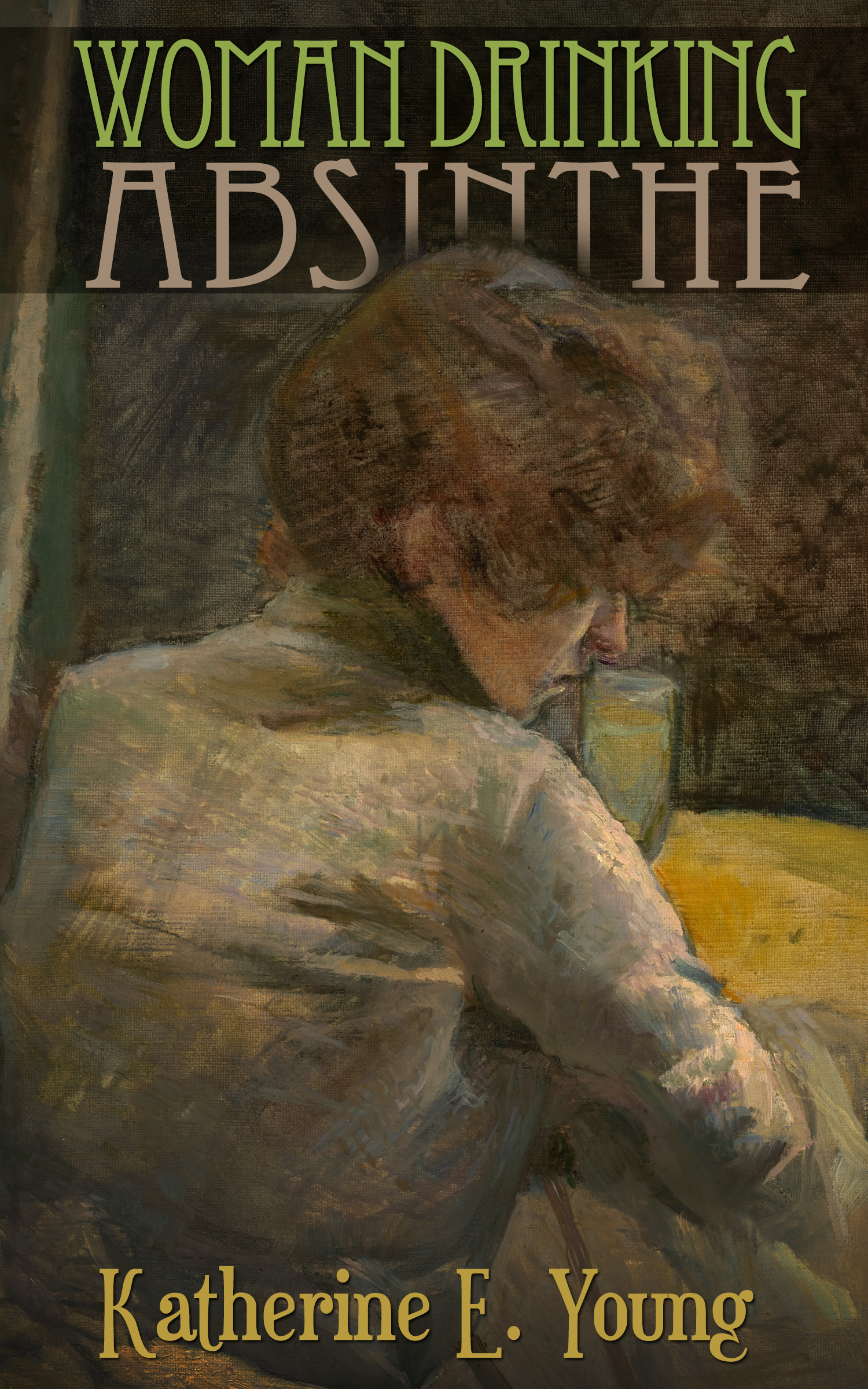
The poems in Katherine E. Young’s Woman Drinking Absinthe (Alan Squire Publishing, 2021) probe the extremes of passion and transgression, desire and its aftermath. The mood is Paris, the morning after a debauch: bitter hot chocolate, a croissant, and a strong aftertaste of the previous night. The setting is Art Nouveau, with its ornament and excess; the playlist is Debussy, Ravel, Stravinsky, and Puccini. Although we are firmly in the city, there’s a whiff of the forest’s folktales and monsters, bears and Bluebeard.
The women of these poems, from the naïf who willfully ignores evidence of Bluebeard’s crimes to Manet’s dispirited barmaid at the Folies-Bergère, brush off convention at their peril, even though convention imperils their bodies, their spirits, and their art. In this second collection, Young, whose earlier Day of the Border Guards explored Russian history and literature, continues to ask the hard questions: why does love fail? How can art come from pain? What heals the soul?
Cover: Henri de Toulouse-Lautrec, Waiting, c. 1887, Oil on canvas. The Clark Art Institute, 1955.564. Used with permission.
Press Coverage and Happenings for Woman Drinking Absinthe
“If There Is a Hell” from Woman Drinking Absinthe was featured in “Lyrical Motion: A Dance and Poetry Collaboration” at the 2022 Fall for the Book Festival. Choreography and performance by Selin Boybeyi.
From July 18-22, 2022, Sundress Publications and guest curator Genevieve Pfeiffer featured five poems from Woman Drinking Absinthe in “The Wardrobe’s Best Dressed”: “The Bear,” “Interval,” “Succuba,” “African Violets,” and “Phantom Limb.”
Jane Kozhevnikova’s settings of “I Cry Out” and “Salt” from Woman Drinking Absinthe were awarded third prize for chamber vocal composition in the 2022 American Prize competition.
Woman Drinking Absinthe named among “Best Books (I Read in) 2021.”
These poems about an affair are dark and disturbing, mesmerizing and memorable, in exactly the right ways.
Read Leslie Pietrzyk’s full list of recommended books in Best Books (I Read in) 2021
On August 21, 2021, Fresh Squeezed Opera premiered Jane Kozhevnikova’s settings of “I Cry Out” and “Salt,” both based on poems from Woman Drinking Absinthe, for piano (Candace Chien) and mezzo soprano (Allison Gish).
It’s a love poem, pure and simple—I hope it speaks in a kind of universal way about a very specific thing.
Read Christal Ann Rice Cooper’s post about Katherine E. Young’s “Salt” in Backstory of the Poem
I always knew what this collection was going to be about—the challenge was to talk about monstrous things in human terms, to be simultaneously clear-eyed and empathetic about human frailty.
Read Kristin Kowalski Ferragut’s full interview with Katherine E. Young in JMWW
[W]hen we write, when we make any kind of art, we’re saying “Stop! Look at me! I’m here!” Same for when we fall in love, which is also a kind of art.
Read “Our Favorite Things,” an interview (with additional video) between poets Natalya Sukhonos and Katherine E. Young published by Punctured Lines, here
This collection deals with some fairly difficult themes—seduction, betrayal, atonement—themes that go back at least to the Greeks. I had a lot of fun slipping in and out of established literary tableaux that explore those themes, adopting the voices of a talking bear, the minor Madama Butterfly character Kate Pinkerton, and Bluebeard, to name just a few. And I got to indulge my ongoing fascination with the history of science; the book includes a found poem from the Philosophical Transactions of the Royal Society that dates back to the 1690s.
Read Q&A with Shelf Life author Katherine E. Young from the Virginia Festival of the Book
Listen to Christine Sloan Stoddard’s Badass Lady-Folk podcast (Quail Bell Press & Productions) featuring Katherine E. Young reading poems from Woman Drinking Absinthe here.
Readings of Woman Drinking Absinthe
Katherine E. Young reads selections from Woman Drinking Absinthe at Cafe Muse, 1 November 2021:
Katherine E. Young reads “Leaving Home” at the Gathering of Laureates, 10 October 2021:
Katherine E. Young reads at the April 17, 2021, launch of Woman Drinking Absinthe:
Nin Andrews, Sandra Beasley, Vijay Seshadri, and Katherine E. Young read at the Virginia Festival of the Book:
Kim Addonizio, Sandra Beasley, and Katherine E. Young read and discuss poetry with Reuben Jackson at the Gaithersburg Book Festival:
Reviews of Woman Drinking Absinthe
Young’s core subject is love, but there’s nothing redemptive or particularly healing about its manifestations… In fact, the poems in this collection depict love (and sex) as a battlefield, both physical and psychological.
Billy Mills (read Billy Mills’ full review in Elliptical Movements)
Young presents juxtapositions that enliven tensions within individual pieces — lines and circles, violence and tenderness, human and animal — then blurs the lines of contrast… Young presents us with gorgeous poetry that feels musical and magical and connects us to humanity with interest and compassion, despite our flaws.
Kristin Kowalski Ferragut (read Kristin Kowalski Ferragut’s full review in Los Angeles Review)
Rarely does a book come along that combines historical, literary, and artistic icons with the ordeals of intimate relationships. Woman Drinking Absinthe deftly chronicles the age-old saga of desire and deceit with unexpected detours… The collection becomes a survival guide where readers are given the roadmap and invited on a riveting and hazardous journey.
Lisa C. Taylor (read Lisa C. Taylor’s full review in Mom Egg Review)
Young has crafted an emotional roller coaster that is both visually unsettling in places and emotionally scathing… [She] doesn’t just plunge readers into relationships in motion, but those that are over, on the side, breaking apart, and being observed from the outside… Nothing is taboo in this collection.
Serena Agusto-Cox (read Serena Agusto-Cox’s full review in Savvy Verse and Wit)
“Who doesn’t desire to be mesmerized by love?” Katherine E. Young asks in “Place of Peace,” a poem that conflates passion with a visit to Shiloh National Military Park, a Civil War memorial. Love, indeed, is the overarching theme of this remarkable collection… Woman Drinking Absinthe is unflinchingly honest and lyrical in exploring illicit love, its allure, its dangers. Indeed, [Young is] very persuasive in contending that, forbidden or not, “love’s the only thing worth fighting for.”
Charles Rammelkamp (read Charles Rammelkamp’s full review in Compulsive Reader)
Young pays tribute to her chosen cast of women with skilled musicality, all in service of asking: how and why does love fail?… In this second collection, Young — whose earlier book Day of the Border Guards explored Russian history and literature — continues to employ what she’s learned from the great Russian writers she often translates. Like Marina Tsvetaeva, who makes a cameo appearance here, Young finds literary touchstones among sources as varied as German folk tales, Greek drama, and the Old Testament.
Sandra de Helen (read Sandra de Helen’s full review in Anomaly)
Advance Praise for Woman Drinking Absinthe
Katherine E. Young’s poems wrap with equal grace around bears and Bluebeard, salt and calculus, as they shift between local and global, past and present. Everything gets in: through all five senses, drinks tasted, birdsong heard, each line slipping under your skin. Woman Drinking Absinthe is a book stark with truth but alive with magic, and in it Young illuminates the broken but beautiful world we inhabit.
Jesse Lee Kercheval, author of America that island off the coast of France
Woman Drinking Absinthe is an emotional rescue operation, survival guide, and call to arms. How do you navigate the minefields of the heart? Avoid the collateral damage of relationships? Katherine E. Young finds keys in nature, in opera, in seasoning, in Civil War battlefields, phantom limbs, shadows, and invisible flowers. This book is a puzzle pulsing with universal need, and yet, she adds coyly, “Who doesn’t want to be mesmerized by love?” A hard-won truth for life’s one-act play.
Richard Peabody, founder and editor of Gargoyle Magazine, author of Guinness on the Quay
Woman Drinking Absinthe jolts like a sugar cube dipped in wormwood. Young chronicles the body’s messy, inexplicable hungers with all the props of a well-stocked mind: Euclidean geometry, Manet’s ambivalent barmaid at the Folies Bergère, the bloody tale of Bluebeard, the colonizing love triangle of Madame Butterfly, and even the inescapable legacy of a Civil War battlefield. From the first heady, musical poem, you, too, will succumb to Young’s “iridescent dreams.”
Karen Kovacik, author of Metropolis Burning
In Woman Drinking Absinthe, Katherine E. Young describes a precarious existence in the shadowed world, “beneath the city’s skin,” in darkened streets, parking lots and jazz bars, meeting men whose “fingers flense [her] face” in temporary rooms. A prize-winning literary translator, Young infuses this deeply moving book with echoes of Russia—Marina Tsvetayeva, tsarinas, and tame bears. Young’s voice is sometimes dark, sometimes ironic, but always musical and world-wise, as when she instructs us in “Planning Your Suburban Affair,” to “seek the hole between lampposts: bone in the throat/ of the universe that buys you time.”
Nancy Naomi Carlson, author of An Infusion of Violets
Day of the Border Guards
Katherine E. Young’s Day of the Border Guards (University of Arkansas Miller Williams Prize Series, 2014) is set entirely in Russia and the countries of the former Soviet Union. The ghosts of Russian writers Pushkin, Mandelstam, Tsvetayeva, and many others wander through these poems, making tea, fighting with their relatives, cursing faithless lovers. Bulgakov’s heroine Margarita describes meeting the Master; Lermontov’s grandmother worries that the young poet is wasting his life. Lady Macbeth is alive and well and living in post-Soviet Georgia. A man falls through the ice into a ruptured hot water pipe, nuclear reactors melt down, an airplane lands on Red Square. Perestroika arrives and departs, like other fashions. A marriage falters. The phone rings in the middle of the night in a Siberian hotel. The corpse of a gypsy king boards a flight for Moscow.
Cover painting: “Summer’s Over” by Igor N. Kachanov. Used with permission.
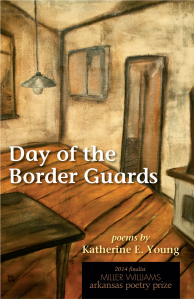
Reviews and Acolades for Day of the Border Guards
Day of the Border Guards was a 2014 finalist for the Miller Williams Arkansas Poetry Prize. It was also named one of Split This Rock’s “eagerly anticipated” books of 2014, one of Beltway Poetry‘s “Best Books of 2014,” and selected as an Honorable Mention for the North Carolina Poetry Society’s Brockman-Campbell Award.
Katherine E. Young’s Day of the Border Guards is a commendable book reflecting an astute understanding of Russia, its history, and countrymen. A skilled craftsperson, the author ingeniously creates poems that bear witness to a compelling past. Here is a poet capable of unveiling humanity with a vibrancy that lingers. Even a dezhurnaya—or museum docent/guard—gains relevance alongside figures as eminent as Osip Mandelstam and Mikhail Lermontov. Here is a writer, whose lyricism resonates in the reader’s mind long after closing the book. This debut collection is a standout for a writer who is well-versed in the art of observation.
Carolyn Kreiter-Foronda, Brockman-Campbell judge
These poems are bone-chilling: looking out her window, Young sees “leafless birches // shivering the ice-covered courtyard” (“Centralized Heating”). But Russia isn’t all about bad weather and feeling out of place. And Young’s poetry is anything but drab and dreary. This is also a world of vodka, tea, and hand-knotted rugs. In fact, the poems are so deeply imbued with Russianness that Young might be a Russian poet herself, very ably translated by the American poet Katherine Young! There’s such a sense of authenticity—a familiarity with the environment, the people, and the great Russian writers themselves—that the reader never feels these are travel poems.
Barbara Goldberg (read Barbara Goldberg’s full review in Poet Lore)
[T]he poems of Day of the Border Guards bear witness to the subterranean chaos undergirding the surface “order” of ourselves and of history—in their case, the Soviet Union. They are, in short, what all poetry is, insurgents crossing the borders of what appears to be and what is, the borders of the real and the fanciful, the borders of truth and falsehood, and the borders of the beautiful and the ugly. Like the heating system she described, Young presents her poems as a kind of centralized seeing, in the sense of focusing in on all those borders and in the process, if not eradicating them, forcing a reunification of what borders attempt to keep separate—human beings.
George Drew (read George Drew’s full review in Valparaiso Poetry Review)
The Hootch calls Day of the Border Guards “stellar.” Rose Solari describes the poems as “moving” and “enchanting” (read Rose Solari’s full review). David Clarke says: “[T]he poems are constructed around the lived detail of everyday existence in Russia’s past and present, closely observed, yet never exoticized” (read David Clarke‘s full blog post). Thomas Dorsett writes: “This collection…should be read by everyone who has an interest in poetry” (read Thomas Dorsett’s full review in Loch Raven Review).
Advance Praise for Day of the Border Guards
Katherine Young’s Day of the Border Guards is very much about crossing borders – those between reality and, in this case, Russia. Which to say she offers us a Russia of direct experience and the transformed country of the imagination. Her text is dense with marvelous detail, dramatic intensity, and intentions that are unmistakable in their insight and judgment. Young chooses to represent both herself and the voices of various personae, sometimes, in fact, as one blended voice: hers and Akhmatova, hers and Mandelstam.
Stanley Plumly
In Day of the Border Guards, Katherine Young examines what it means to be a poet of witness. And what she’s a witness to happens to be nothing less than the Soviet Union before the fall. Hers is a journey haunted by the ghosts of Pushkin and Bulgakov (“I could be myself, or any one / of Pushkin’s women, or Margarita walking / the alleys with yellow flowers in her arms”), the ghosts of dissident poets like Osip Mandelstam, and the personal ghosts of romantic disappointment and philosophical doubt (is she a witness who sees but feels nothing? or is she unable to see at all?). Young’s odyssey is staggering in its scope and vision, but poetry lives in the details and here there are innumerable places where the poetry simply takes your breath away. In “Nearing Chernobyl,” for example, Young writes: “For there’s enchantment aplenty here: / the cold wheeling of comets, breath / of the sun howling down on the rump / of a woman peeing by a tree in Ukraine. / I carry the dust of the universe on my shoes.” Lines any poet — even Pushkin or Lermontov or Mandelstam — would be proud of.
John Surowiecki
Van Gogh in Moscow
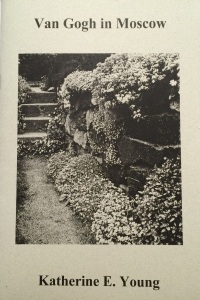
Van Gogh in Moscow (2008), Young’s chapbook of poems about Russia and the former Soviet Union, served as the foundation for Day of the Border Guards. The publisher of Van Gogh in Moscow, Pudding House Press, is now out of business. Many of the poems published in Van Gogh in Moscow were later revised for Day of the Border Guards.
Gentling the Bones
Young’s first chapbook of poetry, Gentling the Bones (2007), explores the contradictions of belonging to the American South as a child of the Civil Rights era. Drawing on family letters penned by unrepentant slaveholders, Young investigates the troubled legacy of white supremacy and its aftermath.
Cover photo by Kristin Hansen. Used with permission.

Reviews of Gentling the Bones
Gentling the Bones is a memorable poetry collection that explores the intersection of family and history with skill and imagination. Some of the poems have to do with the Southern heritage and the present state of Southern life; others concern more recent events and more varied locales. The Southern poems are particularly appealing.
Janet McCann, BigCityLit
Katherine Young…is at home with history, at home with complexity, a clear-eyed witness to life’s unending twists and ironies. The human toll of slavery, of racism, the ignorance and poverty they generated, form the back-story of this eloquent book.
Judy Neri, The Montserrat Review
[In] Gentling the Bones, Young establishes and analyzes movement through time, recognizing change as more than just “the difference between silver/ and gray” as in “Grandma at Ninety,” but also as a personal journey through small towns, private devastation, relationships with family, and drifting lovers. Through all of this change, however, there still remains an overwhelming desire to reconnect with the past as well as with her own Southern roots, ultimately revealing “more than one way of seeing things.”
Whitney M. Smith, The Montserrat Review
Advance Praise for Gentling the Bones
[A] treasure chest crammed with the stuff of life, a wealth of particulars fully imagined. Tender and intelligent with an eye and ear for the lyric detail, Young’s wide-ranging poems are large in their ambitions and show the action of a mind curious about the past, eager to comprehend the present, and passionate in its allegiance to the complexities of family and history. Her description of a green-gold snake’s “tiny forked tongue / flickering delicate, speculative / in the morning sun” could serve as an ars poetica for these poems as they reach out for wisdom and explore the perilous world around.
Jean Nordhaus, author of Innocence
In these moving poems, Katherine Young “revisits / old wrongs” and sifts a “litter of ghosts” as she wrestles with the significance of her Southern roots. Building a vivid sense of place, her haunting details and braiding perspectives compress generational narratives into moments of searing revelation. “[S]ilver the color of her voice / when the lightning [shoots] through,” Young brings the past to life in all its lived complexity then sets a rigorous moral imagination to work on “gentling the bones.”
Pamela Harrison, author of Stereopticon and Okie Chronicles
Additional Publications
Work by Katherine E. Young can also be found in these and other anthologies:
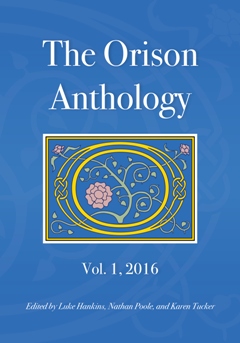
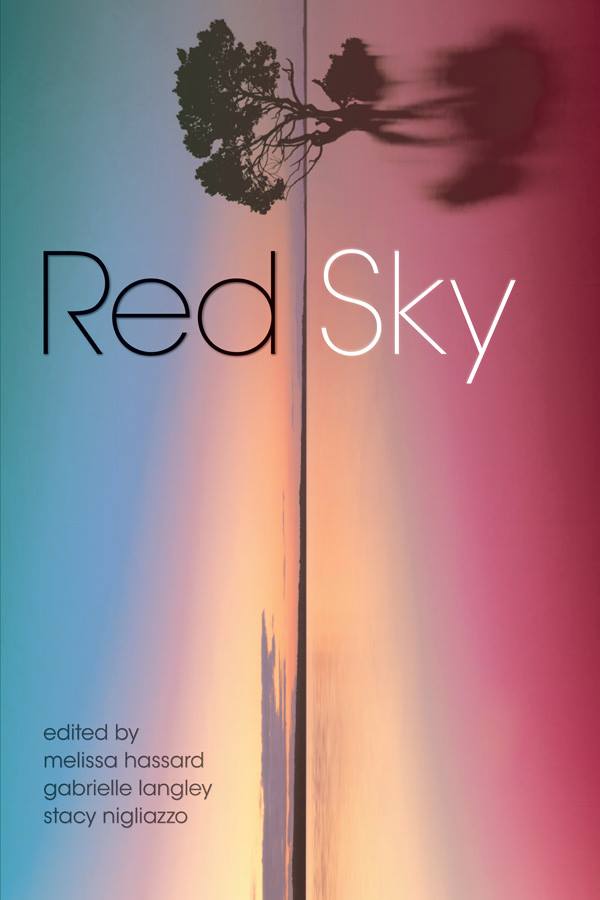
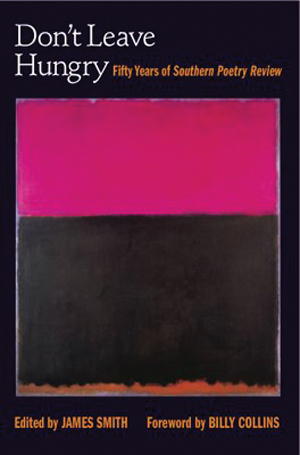
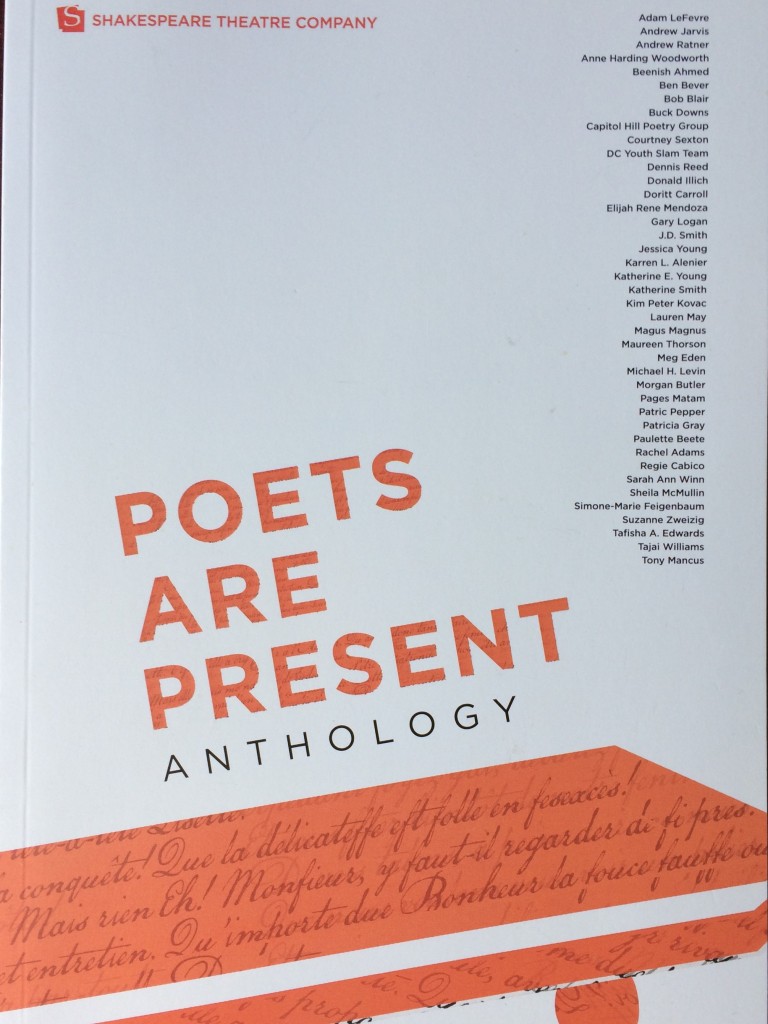
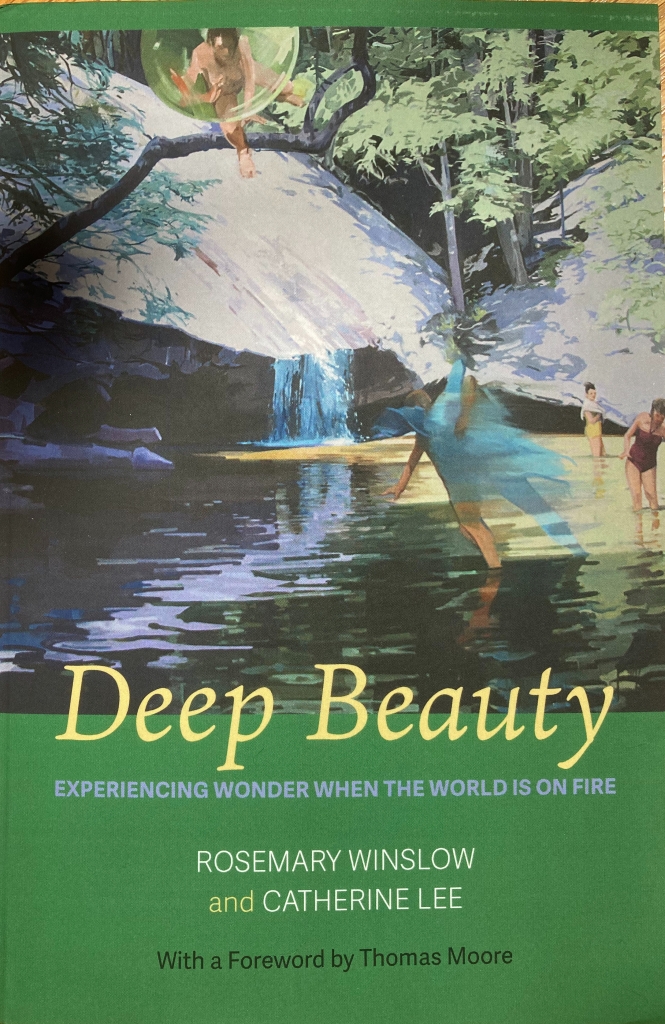
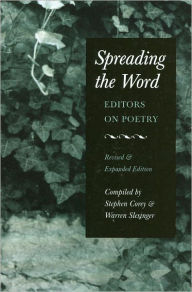

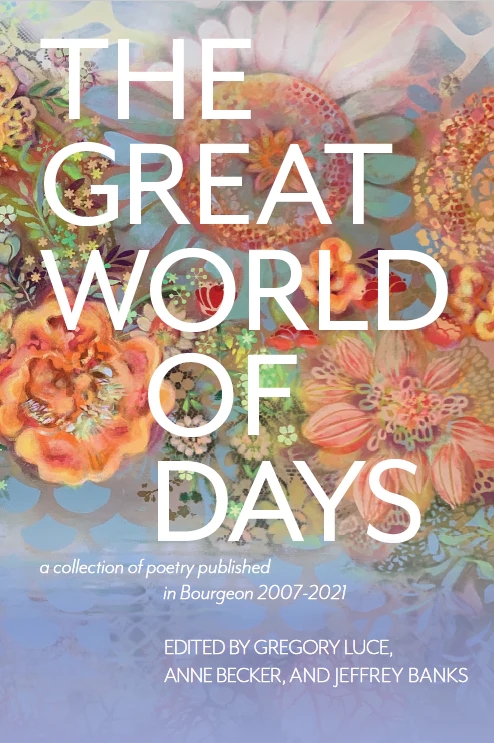
5 Comments